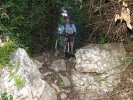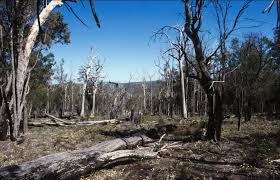You are hereForums / By Discipline / Mountain (off road) / By Location / Australia / Phytophthora cinnamomi.(dieback)
Phytophthora cinnamomi.(dieback)
After riding the KC trails today, noticing all the muddy and wet areas and the bike needing a good rinse after the ride it made me think about Phytophthora cinnamomi.(dieback)
The main thing I was thinking was how many people go home and rinse/ wash their bikes on the lawn or next to a tree at home. Washing all the mud and debris into the garden. What is the risk of spreading Phytophthora cinnamomi to you garden? I have been told that tap water will kill the fungus due to the chemicals in it but the debris and mud can fall of before the tap water has a chance to do its job if it is true that it kills the fungus. Some of the KC goes through areas that are affected by Phytophthora cinnamomi so I thought I would bring it up to discuss on the forum. What do you think?
Cheers
[Mod. moving this to Australia as appears a national problem]
- Login to post comments


What chemicals do you think are in tap water?
Chlorine?
I'm pretty sure they don't use chlorine any more, they run the water under powerful UV lights which supposedly kills the bugs. I've actually worked on one of the UV sterilizers in a reverse osmosis plant. I read somewhere once that clothes washing type detergent kills dieback.
When we were allowed to use the Greystones area up behind Mundaring Weir for XC races, they requested that we clean the bikes when we took them out to stop spreading dieback elswhere. However few did
Chlorine I think is still used in the Kalgoorlie pipeline. A little less now though as rumour has it a few years back you couldn't keep fish in tanks in some hills areas (eg Mundaring) unless you declorinated the water. If you didn't the chlorine could burn the fish as they had to put in so much so it lasted till Kalgoorlie .
.
The new water treatment plant looks huge but has also removed some single track, oh well that's progress.
Dunno about anywhere else in Australia, but after being overseas, upon return to Sydney I really noticed the chlorine in the tap water.
I don't know if it is this chlorine, but after being back for a couple days my stomach was really messed up. After being fine all over Europe found this suspicious, so I stopped drinking tap water and voila... feel much better.
Has to make you wonder, what else is in there!
Back on the subject of weed spread & bike cleaning. After a muddy ride, yes, you should always clean your bike at the trail head (technically, after every ride, eh?). Hopefully there would be a tap close by to rinse things off. A bidon squeezed hard can create a surprising powerful jet.
For places without a nearby tap I bought a portable, powered 'pressure' washer from T7 (http://www.torpedo7.com.au/products/T7W11N0W1/ti...). Has a decent sized tank & hose. Not massive pressure but certainly good enough to remove wet mud & sand.
I guess to kill weeds I should consider putting
bleach or something70% meths (see below) in the tank of a washer like that? Or as the cleaning happens mostly on the road or car park is there any point in that?If anyone knows of a good paper i would be keen to see any research results that have looked specifically into the spread of dieback by bicycle and how to prevent it. I have often wondered if MTb tyres are more or less likely to spread dieback than the boots of a bushwalker?
Ahhh... quick search and I found Mt Annan Botanical Garden put out a flyer on this. See: http://bmorc.com/node/33004 & http://www.rbgsyd.nsw.gov.au/plant_info/pests_di...
Says, "Disinfecting is easy if you spray with 70% methylated spirits diluted with water."... so that's what should go in the tank of my washer
A washdown station should be part of every carpark to leave the bulk of the mud of where it came from.
Another way to tackle the mud is simply to close down the trail in wet weather.
Redesign/fix up/re-align the trail are other options. I would prefer not to re-align a trail as it can create a multitude of open alignments which is not good trail design.
But 1st up, good trail design and planning will negate mud from trails to counter dieback issues.
Was a bit of talk on the forums about both die back and the more easily spread myrtle rust a while ago.
Wash down with 70% metho diluted with water is the recommended prevention
A few threads with some interesting info
http://bmorc.com/node/33004
http://ctmbc.net/node/18686
http://ctmbc.net/node/18361